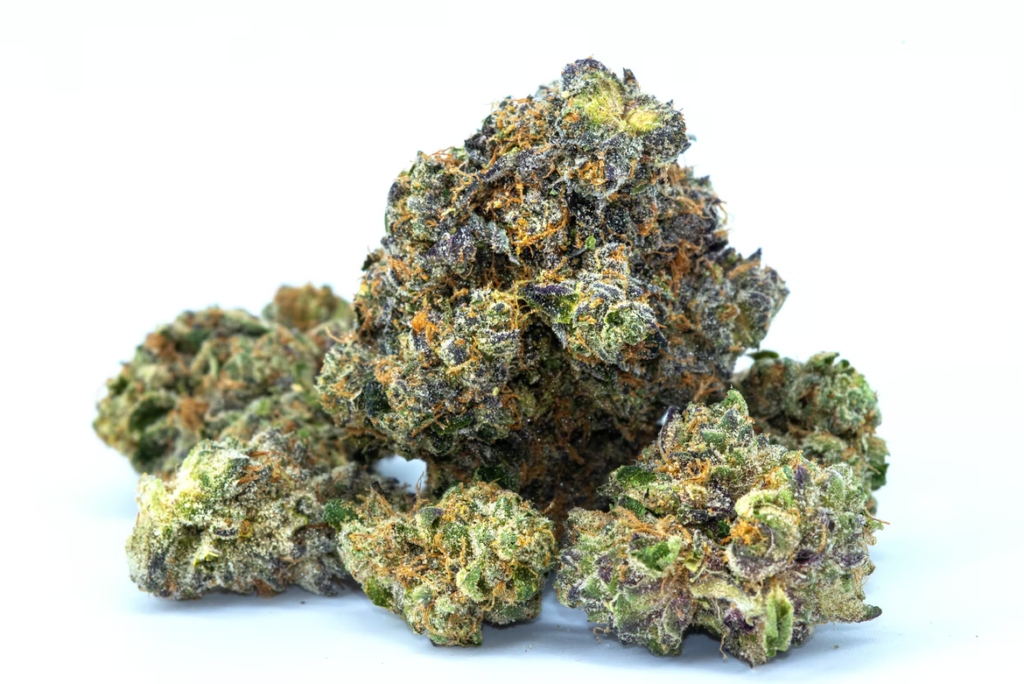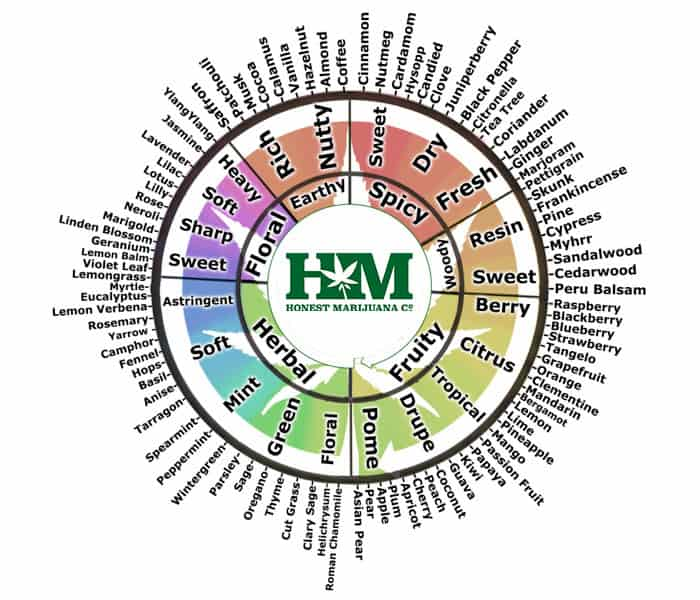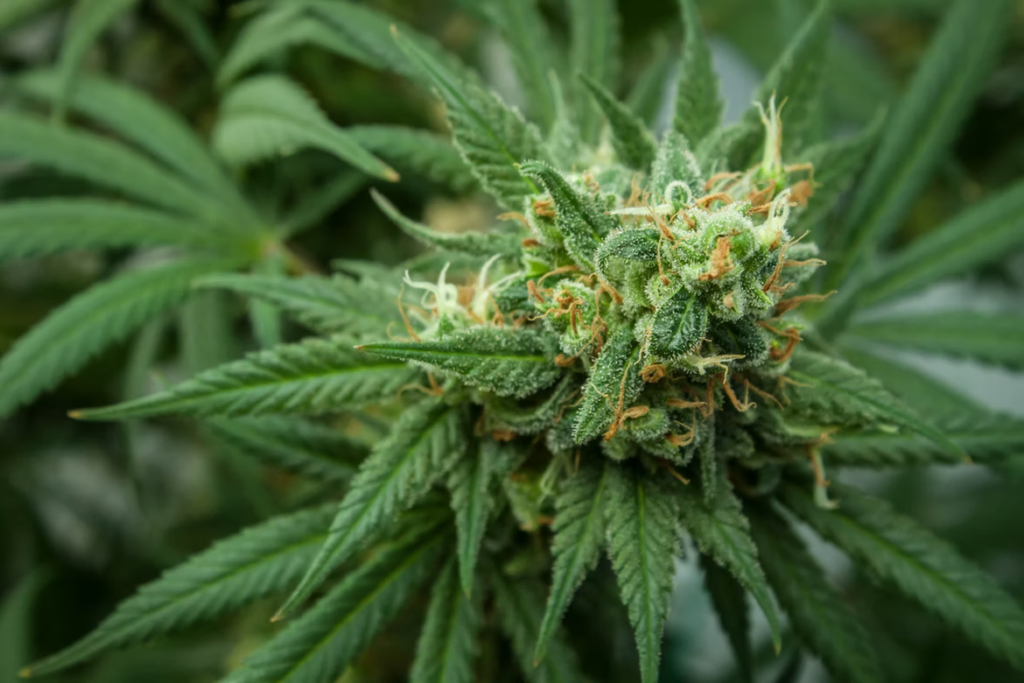Caryophyllene: Definition, Effects, And Benefits
[ad_1]
Ever wonder what gives your favorite cannabis strain its pungent peppery smell and taste? Chances are, it’s caryophyllene.
If you’re like most people, you’ve never heard of it. And that doesn’t surprise us the least little bit. That’s because caryophyllene is a chemical component of cannabis that often gets lost in the glow of its cannabinoid cousins THC and CBD.
And even if you have heard of caryophyllene, it may have been pronounced so incorrectly that you wouldn’t in a million years connect it to the topic of this article.
But don’t let caryophyllene’s lack of notoriety and difficult pronunciation fool you — it’s an important part of the cannabis experience.
In this article, the all-things-cannabis experts at Honest Marijuana tell you everything you need to know about this tasty terpene.
What Is Caryophyllene?

Caryophyllene — β-caryophyllene (beta-caryophyllene) to be more precise — is a terpene that is extremely common in modern marijuana strains.
As we mentioned at the beginning of this article, caryophyllene is responsible for producing many of the warm, spicy, peppery flavors and smells you’ve come to enjoy in your ganja.
If you’re trying to imagine what caryophyllene smells and tastes like, think cinnamon, cloves, basil, and oregano — all of which express high percentages of caryophyllene in combination with other terpenes.
Other common plants that contain high amounts of caryophyllene include:
- Ylang ylang
- Rosemary
- Black caraway
- Hops
So, if you’ve ever run across any of those things growing in your garden, you’ve got a pretty good idea what caryophyllene tastes and smells like.
A Bit About Pronunciation

We’ll be the first to admit it: The word caryophyllene is a bit of a mouthful. It doesn’t help that it’s got multiple Y’s, a PH, and a double L crammed into the space of five small syllables.
Lucky for you, in addition to being experts on all things cannabis, we’re also experts on how to pronounce the complicated words that come with it.
Now, even though caryophyllene can technically be broken into five syllables (ca-ry-oph-yl-lene), we’re going to break it into four because the first two actually form an extremely common word. This makes it easier to get the hang of.
Here are the basics:
- Ca + ry = Carry
- Oph = Off (the major stress within the word goes here)
- Y = Uh
- Llene = Lean
Say those four words slowly several times putting the bulk of the stress on the second, and then gradually speed up until the syllables flow together just like any other word you’re familiar with.
Carry — Off — Uh — Lean
Keep practicing, and you’ll get it!
Throughout the beginning of this article, we’ve mentioned repeatedly that caryophyllene is a terpene. But what exactly does that mean? Read on for the answer.
What Are Terpenes?

Terpenes are a large class of chemical compounds (often taking the form of oils) that, when detected by your nose and tongue, produce an entire range of smells and flavors.
The general category of terpenes can be subdivided into monoterpenes and sesquiterpenes.
Monoterpenes — such as myrcene, limonene, and linalool — are light terpenes (think weight) that are responsible for a wide range of floral scents including rose, apple, geranium, kiwi, and jasmine.
Sesquiterpenes — such as caryophyllene, humulene, and cardinene — are heavy terpenes (again, think weight) that are responsible for a wide range of pungent scents including diesel fuel, skunk, tea tree, musk, and patchouli.
So, for example, the terpenes that give mint and chocolate their unique flavor can, with the right breeding, be produced in everyone’s favorite “baked” cannabis strain (Thin Mint Girl Scout Cookies).
What’s more, combinations of terpenes can yield novel smells and tastes like skunk and diesel fuel (two decidedly non-plant aromas).
But the cool factor doesn’t stop there.
Terpenes — be they of the mono- or sesqui-variety — are not unique to sativa, indica, and ruderalis. In fact, all plants produce terpenes in various combinations and quantities.
That’s why all the flavors and aromas in the image at the start of this section are named after plants. Terpenes are responsible for creating those flavors and smells.
Terpenes also produce a wide range of health benefits and are useful for treating ailments, including:
- Anxiety
- Cancer
- Depression
- Insomnia
- Nausea
- Lack of appetite
- Muscle strain
- Asthma
- Breast cancer
- Stress
- Gallstones
That doesn’t mean you can use caryophyllene to treat all these disorders, however. Caryophyllene has its own unique effects and benefits.
Effects And Benefits Of Caryophyllene

In the case of caryophyllene, the effects and benefits are all rolled into one category. While THC will send you on a psychedelic trip (an extremely obvious effect that might not be considered a good thing), it will also reduce nausea and increase appetite (a definite benefit).
For terpenes and other minor cannabinoids (such as CBN, CBG, and THC-O-Acetate), the effects and the benefits can’t be so easily separated.
To make things as clear as possible, we discuss the effects and benefits of caryophyllene as if they were the same thing (because they pretty much are).
1) Anti-Inflammatory
Studies using caryophyllene to treat everything from osteoarthritis to allergies have shown that the terpene may one day be a major contributor to the care and management of chronic inflammatory diseases.
It’s important to note that the studies were conducted with higher levels of caryophyllene than you’re likely to get in any one smoke sesh, but the results were promising for the future of caryophyllene for treating medical conditions.
2) Antioxidant
Another beneficial effect of caryophyllene is that it has the ability to act as an antioxidant.
Antioxidants are chemicals that help remove free radicals (unstable atoms that can damage cells and cause illness and aging) from your body.
It may also have uses as an additive in sunscreen and anti-aging lotion.
3) Anti-Tumoral
Because caryophyllene has potential as a powerful anti-inflammatory, it may also serve as an anti-tumoral.
Recent studies delivered promising results that indicate that caryophyllene may play a role in encouraging anti-metastatic activity (preventing spread) in cancer cells.
However, the researchers warn not to take these results for more than they’re worth because the tests were only performed on single cells. More research is necessary to determine if caryophyllene has any effect on high-mass, malignant tumors.
4) Sedative
Marijuana’s tendency to act as a sedative and contribute to sleep is well known (couch-lock is one of the most common side effects of high-THC strains).
Now, research indicates that very high doses of caryophyllene may have a sedative effect in laboratory mice.
Again, more research is needed, but it’s easy to see how even small amounts of caryophyllene can, when combined with the sedative power of THC and CBD, contribute to your desire to catch some Zs.
Will Caryophyllene Get You High?

No, caryophyllene by itself will not get you high. The only way to experience the psychoactive effects associated with marijuana is to consume THC.
The thing is, unless you purchase a caryophyllene extract or a high-CBD/low-THC strain, there’s no way to take one without the other.
So, don’t conclude that just because your pot contains caryophyllene that you’re going to start hearing colors and get the munchies later on.
Caryophyllene is not the cause of your high — be it a contact high or direct ingestion — THC, and only THC, is responsible.
The Best Caryophyllene Strains

There are so many cannabis strains out there that it’s easy to get confused about which one to purchase — especially if you’re looking for a high-caryophyllene strain.
We’ve taken the time to do the research for you.
Below is a list of the best caryophyllene cannabis strains. Beware, though, that most of these contain some percentage of THC, so while you’re getting a healthy dose of caryophyllene, you may also be getting a healthy dose of everyone’s favorite psychedelic cannabinoid.
Choose these strains for the most caryophyllene:
If you want to experience caryophyllene in all its glory, try rolling a joint, packing a bowl, or making hash with one of these tasty strains.
And, regardless of which strain you choose, there’s one sure-fire way to ensure that you’ll get the most caryophyllene bang for your buck.
Capitalize On Caryophyllene With High-Quality Strains

The best way to capitalize on caryophyllene is to always buy the highest quality organic cannabis you can get your hands on.
If you’re buying dried and cured raw buds, do your research and choose strains from a reputable grower who uses the best organic methods available.
If you’re buying cannabis products — such as wax, shatter, pills, cream, or gummies — check the label or ask the budtenders if they can tell you about how the strains were grown.
Choosing organically grown marijuana that doesn’t rely on harmful fertilizers, heavy metals, or pesticides is a good idea however you consume your pot — whether that’s smoking, eating, or dripping it under your tongue.
Plus, choosing a high-quality organic bud (or insisting on high-quality organic strains in the products you purchase) will ensure that you get the most caryophyllene possible.
For more information on all things cannabis and to check out our 100% all-natural marijuana products, visit HonestMarijuana.com today.
The post Caryophyllene: Definition, Effects, And Benefits appeared first on Honest Marijuana.
[ad_2]
